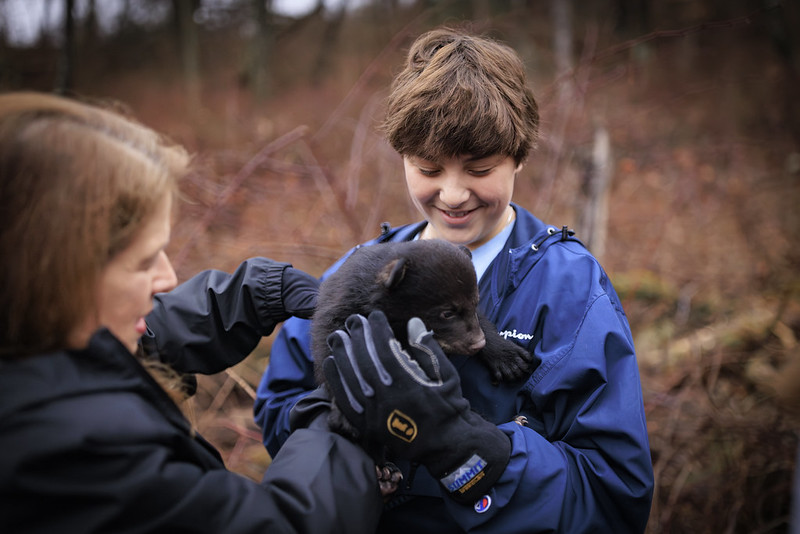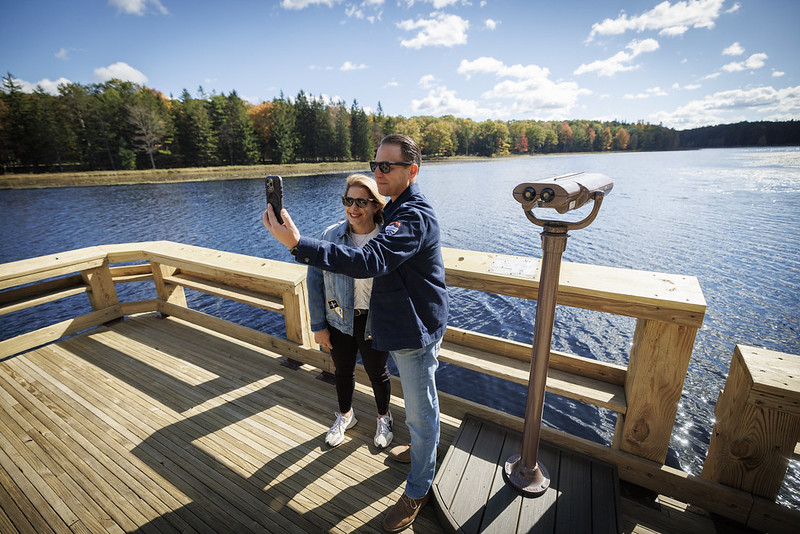State Symbols

Snot otter, mud devil, devil dog, and even lasagna lizard. These are all nicknames for the Pennsylvania state amphibian – the Eastern Hellbender. The Hellbender is a nocturnal aquatic species found in Pennsylvania streams and rivers with larger rocks. They are a large flat salamander that eat small fish, crayfish, and hellgrammites.
The Hellbender is a hardy salamander that can live up to fifty years in the proper environment and are often used as an indicator of the health of a waterway since they need clean and almost perfect water conditions to survive.
In 2019, the Eastern Hellbender was designated as the state amphibian.

Early Pennsylvanians and Native Americans relied on the white-tailed deer for necessities such as food, clothing, and shelter. Today, these animals continue to flourish in Pennsylvania’s forests, with an estimated 1.5 million deer in the state.
The white-tailed deer was designated as the state animal on October 2nd, 1959.

MOOOO! Believe it or not, the state beverage is cows milk. Pennsylvania has a lot of farmland throughout the Commonwealth and ranks 7th in the nation for milk production! The dairy cows in Pennsylvania produce almost 10 billion pound of milk annually! With all the farmers and milk produced it is great for the Commonwealth’s state economy. So when you see cows out in the pasture next time, remember that they are producing our state beverage!
Milk was designated as the state beverage on April 29th, 1982.

Designated the state bird on June 22, 1931, the Ruffed Grouse is a familiar sight in the many forests of Pennsylvania. Also known as a partridge, the Ruffed Grouse was a vital source of food supply for early settlers in Pennsylvania.

A giant breed, described as strong, intelligent, powerful, and faithful, the Great Dane became the official state dog of Pennsylvania in 1965. William Penn, the founder of Pennsylvania, even had a Great Dane! A portrait of him and his Great Dane hangs in the Governor’s Reception Room in the Pennsylvania Capitol.

Found in the cold clear waters of Pennsylvania’s streams and ponds is the state fish, the native Brook Trout. The Brook Trout is a part of the char group of the salmon family and can live upwards of four years. The Brook Trout eats insects both above and below the water!
The PA Department of Conservation and Natural Resources is making sure the Brook Trout’s habitat remains clean with deep water projects and more forest buffer plantings to improve water quality and cooler stream temperatures.
The Brook Trout was designated as the state fish on March 9th, 1970.

The Mountain Laurel is a common sight throughout Pennsylvania when the flower blooms in the summer. Designated on May 5, 1933 by Governor Gifford Pinchot, the flower was a favorite of the Pennsylvania House and Senate to become the state flower.

Looking like the modern-day pill bug, the Eldredgeops rana, also known as the Trilobite, is the Pennsylvania state fossil! The prehistoric invertebrate lived in the Commonwealth more than 250 million years ago. The trilobite is related to the modern-day crab, lobster, shrimp, some insects, and even spiders.
The feature of the Eldredgeops rana that sets it apart from other trilobites is the large frog like eyes. Be sure to keep your eyes open for this fossil next time your rock hunting!
Eldredgeops rana was designated as the state fossil on December 5th, 1988.

Fireflies, the state insect of Pennsylvania, are not actually flies… they are beetles! Also known as lightning bugs, they can be seen lighting up the Pennsylvania skies in the summer evenings with their soft yellow glow.
The firefly’s favorite meals include slugs, earthworms, and even snails. The firefly’s numbers are declining from habitat loss, pesticide use, and light pollution. We can help the firefly population by turning our lights off at night and planting native Pennsylvania flowers and vegetation at our homes!
The firefly was designated as the state insect on April 10th, 1974.

Commonly found throughout Pennsylvania’s forests, the Eastern Hemlock became the official state tree in 1931. Proving to be incredibly useful for early settlers, the Eastern Hemlock provided sturdy wood for log cabins, as well as tannic acid for producing leather.











